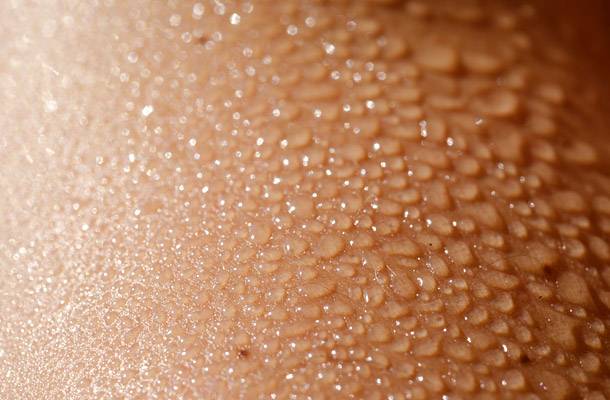Sweat as an igniting device
Researchers have developed stretchable fuel calls that extract energy from sweat and are capable of powering electronics, such as LEDs and Bluetooth radios. In the journal Energy & Environmental Science, the researchers narrated how they connected the biofuel cells to a custom made circuit board and demonstrated that the device was able t power an LED while the person wearing it exercised on a stationary bike. The biofuel that the engineers from the university of California San Diego in the US developed can stretch and flex, conforming to the human body.
The research led by professor Joseph Wang, who directs the center for wearable sensors at the university, used a combination of clever chemistry, advanced materials and electronics interfaces. The researchers explained that biofuels were equipped with an enzyme that oxidizes the lactic acid present in human sweat to generate current. This turned the sweat into a source of power.
The biofuel cell- it is made up of a row of dots that are each connected by spring-shaped structures. It can harvest energy from human sweat. It has the highest power densityrecorded for such a device. To make the biofuel cells flexible, engineers deicided to use a ‘bridge and island’ structure developed by prof. Sheng Xu’s research group.

Image source
A SWEAT POWERED RADIO IS JUST A START
Biofuel cells have come a long way over the years. Scientists have made a skin patch that can power a radio in just two days using human sweat. While the possibility of sweat-powered radios and other electronics is pretty fantastic, scientists have much bolder applications for the technology in store for the future. These cells could serve as health monitors, or to measure the lactic acid that emanates from the muscular organs during exercise.
The power generated could fuel a Bluetooth connection that could always source the information directly to a smartphone so that users could get real-time reports on their physical health. Also the future of wearable biocells has a lot of merits, but the most of it all is that they are non-invasive (i.e. faster and less pain).They would soon become cheap, making them a huge alternative to devices like conventional blood glucose monitors that needs patients to prick that fingers plenty times in a day. In addition to the University of California team’s take on wearables, future medical monitors may be self powering too.
SWEAT MAY BE ABLE TO POWER A MOBILE DEVICE
A skin patch might eventually be used to charge a mobile device. The skin patch developed by the researchers from university of California is a stretchable square just a few centimeters across and sticks to the skin. It is made up of organic catalysts (enzymes) that replaces precious metals normally used in batteries and uses sweat to provide power. Getting power from a biocell to increase its usefulness has proven cunny. We are now getting really impressive power levels. If you perform an exercise, you would be able to power your mobile device. Researchers also used the lactate found in sweat to power their particular bio fuel cell.
In energy density is the key to increasing performance for the biofuel cells. The more energy the cells can generate, the more powerful they can be.
this article is a contribution to @steemit-uyo, a community based blog, authored by @ubongj

Congratulations @steemit-uyo! You received a personal award!
Click here to view your Board of Honor
Congratulations @steemit-uyo! You received a personal award!
You can view your badges on your Steem Board and compare to others on the Steem Ranking
Vote for @Steemitboard as a witness to get one more award and increased upvotes!